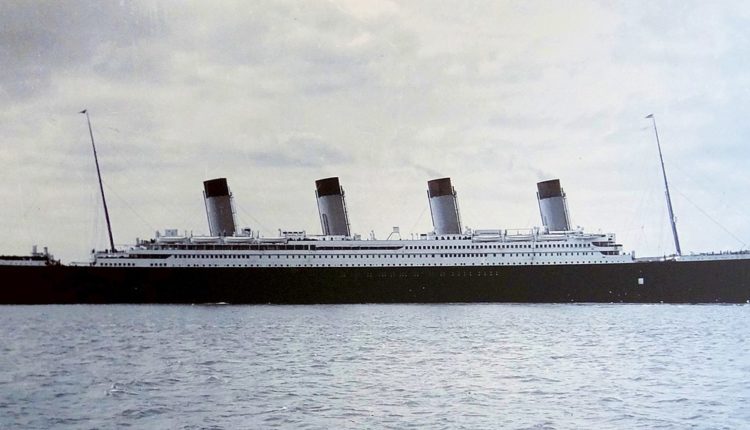The RMS Titanic was, at the time of its inauguration, considered the largest moving object ever created by mankind. With a length of 263 meters this vessel was considered incapable of sinking. However, against all predictions, the ship hit an iceberg on the night of April 14, 1912, eventually sinking and ending the lives of thousands of people.
According to the portal, "Forever young", despite all the warnings that had been transmitted that night, the ship was sailing at its maximum speed (23 knots). On a foggy night, the crew was only able to spot the iceberg 30 seconds before impact, thus allowing no emergency correction.
This crash caused a huge lateral fissure along the ship's hull, flooding five compartments. The ship's design was only prepared to sustain a flood of four compartments at most. To this day, many experts believe that the ship would not have sunk if the collision had simply been frontal, at the stern.
In just two and a half hours the entire ship sank, bringing with it to the bottom of the frozen sea thousands of human lives. Only 705 people survived. More than 1,500 died.
After this short summary, now discover some fascinating details of the ship's history, explained by the History Extra portal.
Where was the Titanic built?
This ship was built in the city of Belfast, more specifically on Queen`s Island (the center of the shipbuilding industry). By the mid-19th century this city had been transformed into one of the largest construction centers, having been responsible for the creation of more than 1,700 ships.
More than 3,000 people worked on the construction of the Titanic, which was also designed by a workshop in Belfast. This was the second of three Olympic-class ships that were ordered by the White Star Line between 1908 and 1914.
Onboard entertainment was provided by a daily newspaper and a music band
The Titanic had its own daily newspaper: The Atlantic Daily Bulletin. Printed daily, this publication contained various news items, stock market information, horse racing results, as well as the daily lunch and dinner menu.
On the ship there was also a daily musical band that decorated more than 350 songs to entertain the first class passengers. As would later be recalled, even when the ship was sinking, none of the members stopped performing in an attempt to calm the passengers.
The last meal served included filet mignon and pigeon
On the evening of April 14, 1912, a few hours before the crash, dinner with over 11 courses was served to the 1st class passengers. Unfortunately for many of them, this would be the last meal of their lives.
Oysters, filet mignon, smoked salmon, foie gras and roast pigeon were just some of the delicacies found on the menus that the rescue teams discovered still intact after the disaster. The Titanic's kitchen was staffed by 113 cooks, 15 chefs, 12 dessert chefs, 5 sous chefs, 6 pastry chefs, and 5 butchers.
Why didn't the SS Californian respond to the Titanic's distress call?
Hundreds of lives could have been saved if the captain of the SS Californian had made a different decision. Parked close to shore because of the risk of icebergs, this ship was only a few miles from where the Titanic eventually sank.
The ship's radio man was asleep when the alerts began to be broadcast. However, shortly afterwards the crew of the SS Californian spotted the white smoke signals from the Titanic. The captain, Stanley Lord, dismissed the alerts and considered that they were only communications between ships of the same cruise line. As such, he decided not to come to the rescue.
It was only the next morning, when the radio came back on, that they realized what a tragic mistake they had made. Although he was not convicted for this behavior, Captain Lord's career would never be the same after this incident.
The famous (and inadequate) number of lifeboats did not break any rules
After the disaster, there have been many inquiries seeking to identify the causes of the accident and the main culprits. They concluded that White Star Line was not negligent. It only had to pay some minor fines as a way to end some legal proceedings.
Having originally been designed to carry 64 lifeboats, the Titanic carried only 20 on her maiden voyage. This number, as it turned out, was absolutely incapable of saving all 2,200 passengers.
Despite the small number of lifeboats on the ship, the truth is that this number did not break any rules or regulations. This eventually led to a revision of the statutes and rules that all ships had to follow from then on.

